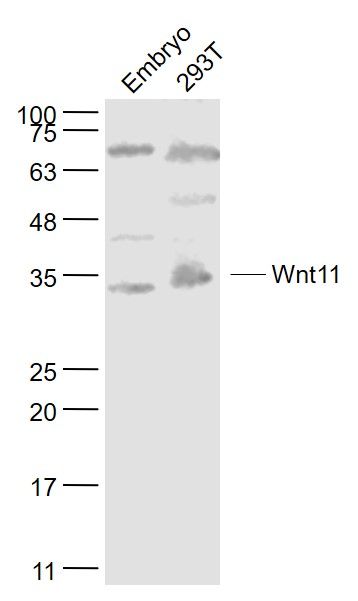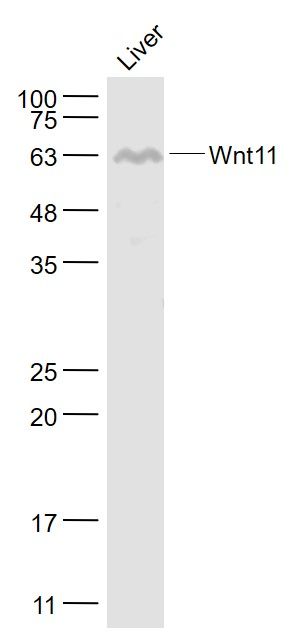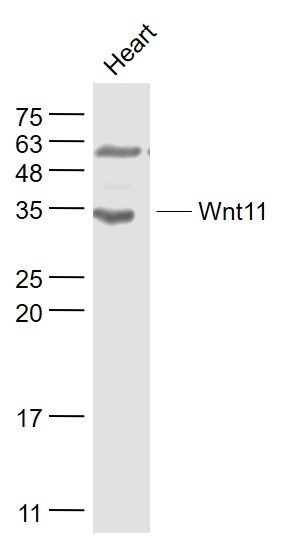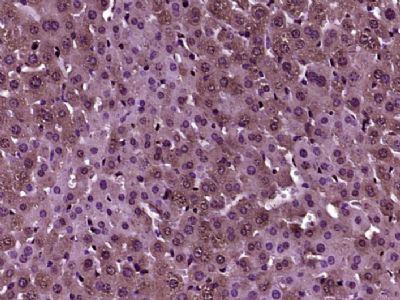Sample:
Embryo (Mouse) Lysate at 40 ug
293T(Human) Cell Lysate at 30 ug
Primary: Anti- Wnt11 (SL8568R) at 1/1000 dilution
Secondary: IRDye800CW Goat Anti-Rabbit IgG at 1/20000 dilution
Predicted band size: 36 kD
Observed band size: 35 kD
Sample:
Liver (Mouse) Lysate at 40 ug
Primary: Anti- Wnt11 (SL8568R) at 1/1000 dilution
Secondary: IRDye800CW Goat Anti-Rabbit IgG at 1/20000 dilution
Predicted band size: 36 kD
Observed band size: 63 kD
Sample:
Heart (Mouse) Lysate at 40 ug
Primary: Anti- Wnt11 (SL8568R) at 1/1000 dilution
Secondary: IRDye800CW Goat Anti-Rabbit IgG at 1/20000 dilution
Predicted band size: 36 kD
Observed band size: 34 kD
Paraformaldehyde-fixed, paraffin embedded (mouse liver tissue); Antigen retrieval by boiling in sodium citrate buffer (pH6.0) for 15min; Block endogenous peroxidase by 3% hydrogen peroxide for 20 minutes; Blocking buffer (normal goat serum) at 37°C for 30min; Antibody incubation with (Wnt11) Polyclonal Antibody, Unconjugated (SL8568R) at 1:400 overnight at 4°C, followed by operating according to SP Kit(Rabbit) (sp-0023) instructionsand DAB staining.
|



